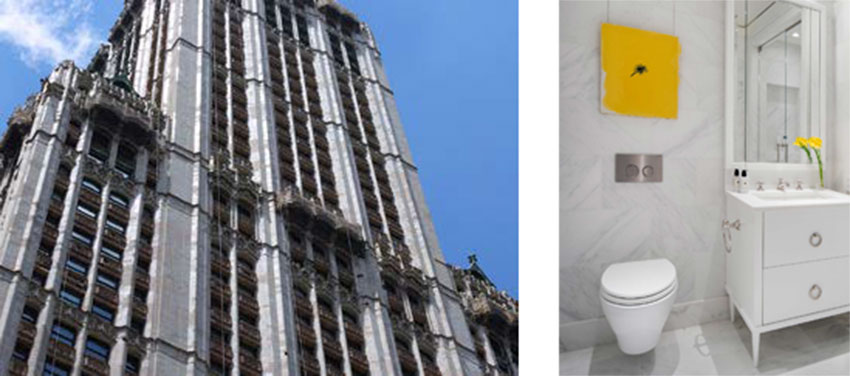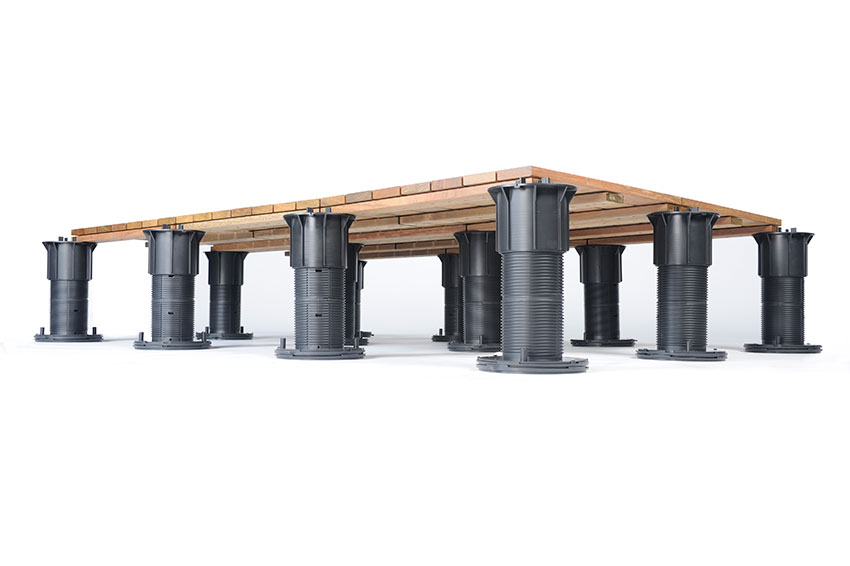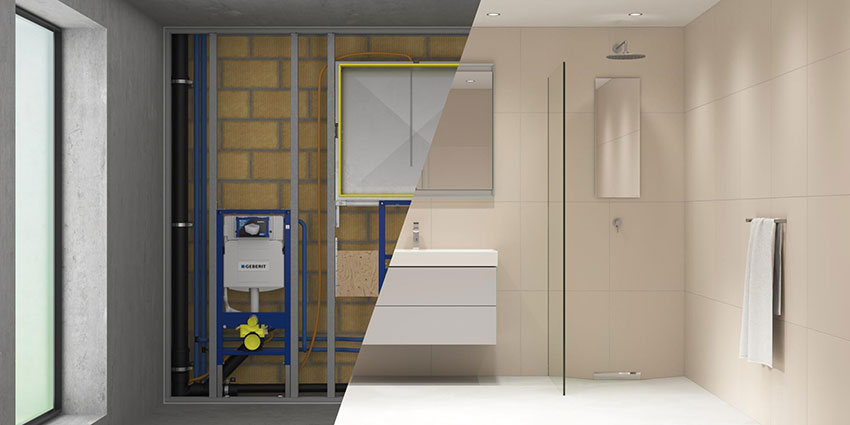This CE Center article is no longer eligible for receiving credits.
It has often been pointed out that the most sustainable building is an existing one. That is because existing building renovations typically require less new material with less embodied energy than totally new construction. Beyond that, some older buildings are constructed with a quality of materials or craftsmanship that is simply not available or economically viable today. In light of all of these things, adapting and re-designing an existing building for a new or different use continues to be a common and sought-after approach to accommodate a wide range of building types. Brick warehouses are transformed into loft-style apartments; former churches are re-purposed into restaurants; pre-WWII school buildings become senior living centers; old factories are turned into offices and business incubators. When multiple buildings are thus transformed, entire neighborhoods or whole cities become more vibrant, diverse, and marketable. Architects and other design professionals engaged in this creative and transformative work often use conventional products and systems in innovative ways to give new life to older buildings. This course looks at two particular areas that can be overlooked in any building renovation or adaptive reuse – specifically the creation of usable and attractive outdoor spaces on existing buildings and the upgrade of plumbing systems within existing walls. Examples are offered of several ways this has been done successfully, economically, and sustainably.
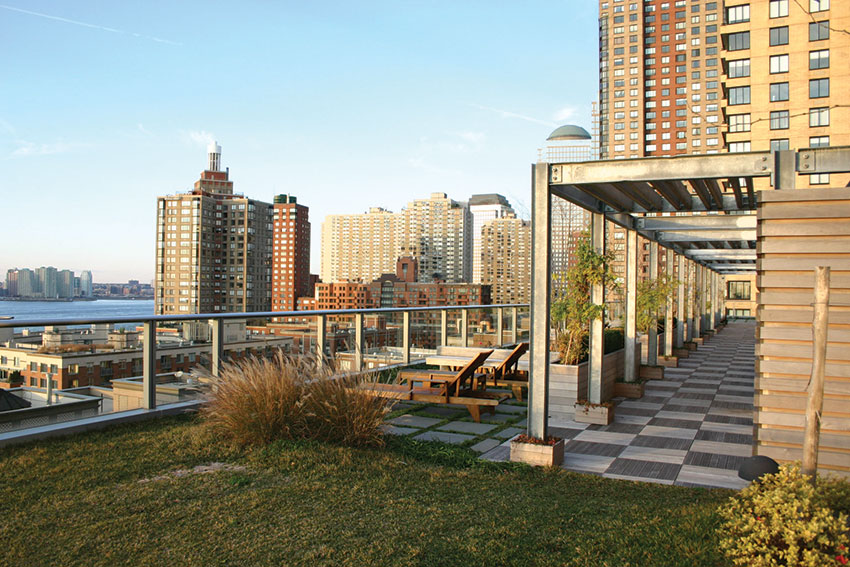
Photo courtesy of Bison Innovative Products
Existing buildings provide great opportunities for creating vibrant, appealing, and sustainable designs.
SITE ADAPTATION
Older buildings sit on their own building site and have their own context that is usually well established. However, there are often outdoor areas that are underutilized or rooftop surfaces that have been ignored. These spaces have the potential to enliven a renovated building by providing outdoor community spaces or living areas.
Incorporating outdoor spaces into a building renovation or adaptive reuse is consistent with many current trends and can go a long way toward improving the design character and usability of the building. Often this can be accomplished without impacting any of the historic nature of the building itself. Some of the design trends to consider in this regard include the following.
- Biophilic Design: This concept is described as "the deliberate attempt to translate an understanding of the inherent human affinity to affiliate with natural systems and processes, known as biophilia, into the design of the built environment.” As is evident in many current and recent building projects, there are many ways to incorporate biophilic elements into a building’s design. It can be done through a visual connection to the outdoors, the incorporation of natural elements indoors, or expanding the indoor spaces to flow into outdoor spaces. Creating outdoor spaces can achieve this indoor/ outdoor environmental connection not only by physical proximity but also through the use of natural materials and vegetation. This can include designing with natural wood and stone and incorporating vegetation and greenery through the use of planters and flower pots. The advantages of biophilic design are based on regular interactions with the outdoors, which are proven to have positive health benefits, such as lower blood pressure, reduced stress, expedited healing, and improved mood and focus.
Something fairly straightforward, such as an outdoor deck, patio, or balcony, can provide living spaces with a direct visual and material connection with nature and a peaceful refuge to rejuvenate the body, mind, and soul. A deck’s sweeping views of the encircling landscape can provide users the opportunity to survey and contemplate the surrounding environment. Such broad landscape views inspire an emotional attachment to the building’s natural surroundings and promote positive interactions between the building users and the neighboring ecosystem. Well-designed outdoor areas provide occupants with the opportunity to release tension through separated respites or through sport and physical activity, thereby improving users’ focus, health, and morale.
- Green Roof Decks: There has been a trend to transform roof areas, particularly in urban settings, into environmentally beneficial and people-friendly places. This includes creating “green roofs” which can provide shade to a building or people, improve stormwater management, reduce temperatures of the roof surface and surrounding air, and reduce energy demands on the building as a result. Such designs and related products can also help mitigate the built environment’s contribution to urban areas’ heat island effect. When a green roof is built on top of a raised deck system, it creates an air space between the deck and the building roof structure. This cavity space can help reduce cooling loads, protect the roof and its membrane from damage from the elements (hail, wind, and UV rays), and significantly extend its lifespan.
- Pop-Up Parks: There has been an ongoing trend to reclaim car-designated zones in urban areas and transform them for pedestrian or hospitality and entertainment use. The result has been the use of “pop-up parks” which can vary in size from a one-car parking space of about 150 square feet to many spaces linked together to a whole block or lane. Such pop-up parks can be considered in adaptive reuse building renovations allowing for temporary installations for events, for seasonal use, or even permanent year-round use.
All of these trends can be useful for an adaptive reuse building renovation. However, there are often construction issues to address such as the lack of a level ground or roof deck surface, the need to easily incorporate natural materials and plantings, and an eye toward working within project budget restraints.
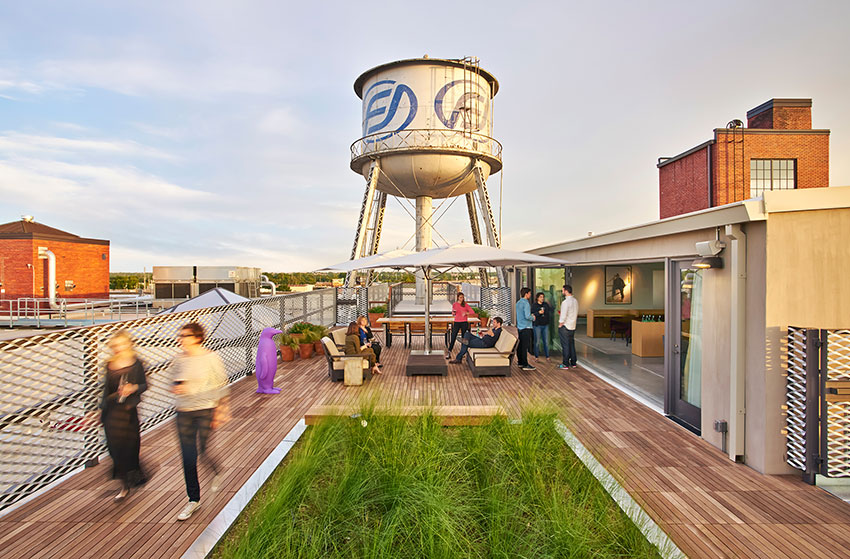
Photo: Mike Schwartz; courtesy of Bison Innovative Products
Reclaiming unused space in existing buildings, such as this rooftop area, allows for the creation of outdoor spaces with many health and wellness benefits to the users.
Raised Modular Decks
A commonly available solution to addressing all of these design trends in building renovations or re-use is the incorporation of a raised modular deck system. Such modular systems are versatile and give architects and others the design flexibility to create unique and beautiful rooftop environments and outdoor spaces. By utilizing adjustable height pedestals to support the deck, uneven or sloped surfaces can be easily accommodated. This creates the opportunity to use underutilized outdoor spaces and turn an otherwise wasted space into a functional outdoor amenity, such as a kitchen, bar, lounge, or garden area. Rooftop decks help to boost morale and strengthen relationships within the community of building users. They can also incorporate natural elements such as planters or natural materials and thus create biophilic design opportunities within a renovation.
Incorporating a pedestal deck system can also provide pedestrian access to green roofs. Native plants and natural building materials offer occupants a visual and material connection with nature. Green spaces benefit occupants’ health and wellness by enabling programmatic flexibility; these spaces can be used for recreation, refuge, and/or restoration. Modular planters provide a space for seasonal growing, giving building users a direct interaction with nature and a connection to food supply and seasonal patterns.
Green roof systems can incorporate rooftop deck components such as wood tiles and planter/cube tops with high solar reflectance index (SRI) values—an indication of the material’s relative ability to stay cool (reject solar heat), reducing heat flow into the building. Designs can include recessed lighting to enhance the ambiance of the environment and improve visibility during nighttime and/or dark conditions. An adjustable pedestal system is also an ideal solution for water feature applications. The system conceals the water supply beneath the surface materials and allows water to drain to the surface below for recycling. Additionally, the deck supports are impervious to water, mold, freeze-thaw cycles, and most chemicals.
Adjustable pedestal deck systems are also ideal for pop-up park installations that can include wood tile, stone, or concrete paver surfaces covering the existing pavement. Popular accessories include attachment hardware, planters, railing, and benches. Some manufacturers offer all the built elements required for a pop-up park installation which creates a smooth installation as well as offering a consistent warranty for the entire system.
PLUMBING MODERNIZATION
enovating or modifying an existing building, particularly an older building, means addressing ways to upgrade the mechanical, electrical, and plumbing (MEP) systems to meet current standards and user expectations. That often creates challenges in a number of ways including the following:
Use the Existing Building Shell: Architects can be faced with the need to meet current code requirements and apply them to existing (often historical) renovated buildings, particularly if there is a change of use or occupancy. Yet there may also be preservation or budget requirements that limit the work that can be done in existing buildings. Hence, there is often a strong need to find ways to upgrade MEP systems by working within the existing structural walls of a building.
Compact Plumbing Chase or MEP Walls: Space is often at a premium in renovation projects as new user programs try to work within existing geometries. There may also be a requirement from building owners to make as much square footage usable or rentable as possible without encroachment from utilitarian things such as plumbing chases or walls enlarged to carry MEP lines. Finding ways to achieve this can be as much a matter of design as it is a matter of selecting space-saving MEP systems.
More Spacious Rooms: Updating buildings often means finding ways to make rooms and interior areas more spacious and open. That leads to different approaches, not only related to moving walls, but also to finding ways to minimize the footprint and space taken up by MEP fixtures and equipment.
Accessibility: Older buildings often aren’t fully accessible by current standards. That may mean addressing accessible routes, both horizontal and vertical, as well as updating things like bathrooms and other spaces that have specific accessibility requirements. Bathroom fixtures and heights become important in this case not only for commercial applications, but also for residential projects where the concept of “aging in place” may be part of the design criteria.
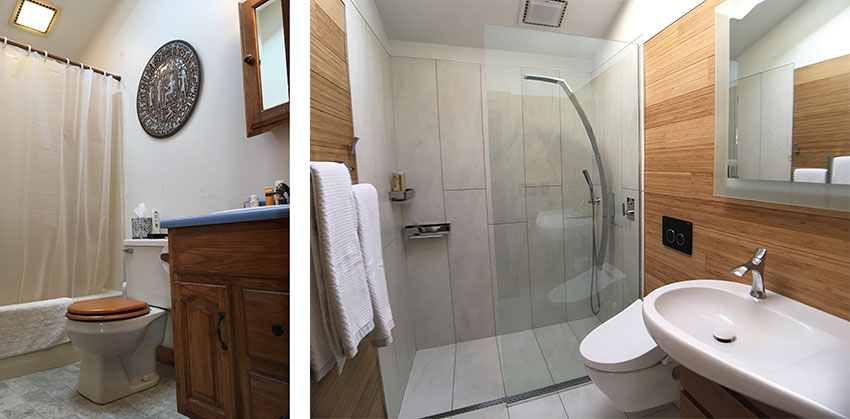
Photo courtesy of Geberit
Bathroom renovations, such as the one shown here at a Vermont ski resort can improve water efficiency, save floor space, and create a cleaner, updated look.
Any one or all of these aspects of a renovation design may be a primary or secondary part of the design challenge for a particular building. Keeping an open mind and looking at different options as they become available can go a long way toward finding good solutions.
In-Wall Mounted Toilet Systems
A good example of how to address all of these MEP renovation and design upgrade questions is by looking at bathrooms or restrooms in an adaptive reuse/ renovated building. Often, the existing conditions restrict the amount of available floor space to make upgrades, particularly when it comes to accessibility requirements. One solution that has worked quite well is installing wall-hung toilets using a wall-recessed mounting system. These are readily available and have been the norm in many European countries for many decades. They are now gaining significant traction for use in the United States as well.
The concept of a wall-hung toilet system is not new, having been used on many commercial and institutional buildings for many years. What is new is the range of products available, including some European ones, that are appropriate for consideration in all types of building renovations/ adaptive reuse. Such systems help address the desire to use the existing shell walls by providing narrow profile designs that can readily fit inside many older wall configurations. This helps to reduce building costs and complexity by keeping the plumbing within the existing walls. Keeping inside the existing walls also means that drainage stacks and other existing plumbing can be re-used. That can reduce or eliminate the amount of floor coring for new piping that may otherwise be required.
In-wall systems also allow for more usable space and more revenue with a potential space gain of 6-9 inches per bathroom. This can add up quickly in multi-unit buildings such as multifamily or hotel settings. This is achieved in part by the adaptability of the system, which allows it to adhere to wall framing studs. The space savings mean more floor space in bathrooms allowing for a more spacious design. The raised fixture also means that cleaning is simplified since the flooring runs directly under the toilet thus eliminating the buildup of dirt or mold that can occur at the base of a floor-mounted toilet. Hence users can enjoy updated, contemporary bathrooms and spend more time living and not cleaning.
In terms of accessible design, the wall-mounted units can provide the added inches needed to meet clearances for maneuverability. The height of the toilet is also readily adjustable to meet accessibility standards where needed or provide standard heights where otherwise preferred and acceptable. The system typically includes wall-mounted, recessed actuators above the toilet since the tank is not visible for a flush valve handle or buttons. These actuators are essentially large buttons making them easier to use than standard options and thus more accessible for more people. Typically, two actuators are present for dual flushing capability – a lower and higher setting of flush water as may be needed.
This, coupled with typically smaller water storage tanks, equates to a more sustainable lower water use, and the related cost savings. In many cases, touchless flushing, with hands free activation, is also available where that option is desired or needed.
MODULAR PEDESTAL DECK COMPONENTS
As noted already, modular pedestal deck systems are versatile and can be incorporated into almost any renovation/ adaptive re-use project type to create usable, sustainable, and affordable outdoor spaces. They consist of standardized components that can be selected, specified, and customized to meet project needs, budget requirements, or green building goals. Regardless of where or how they are used, though, adjustable deck systems commonly incorporate three types of components as described in the following sections.

Photo: Bill Horsman; courtesy of Bison Innovative Products
Standard outdoor deck components can be customized and used creatively to create outdoor spaces consistent with renovation project goals.
Deck Supports
Fixed or adjustable height pedestals are the fundamental support system for outdoor decks and have become recognized as one of the most labor- and cost-efficient methods of creating a level deck over a moderately sloped surface. High-density polypropylene plastic that is 100 percent recyclable is a common material used to manufacture the supports. This makes them impervious to water, mold, and freeze-thaw cycles. Their adjustability offers tremendous design flexibility compared to traditional deck building materials and methods. Using a gravity system, the supports do not penetrate but rather protect roofing and waterproofing membranes thus causing no damage or harm to the surface below. The pedestals can be used to elevate the deck surface to meet the threshold, therefore providing an even and level transition from one space to another. This allows easy access for building occupants with varying levels of mobility.
The location of the pedestals is typically based on a modular layout that follows the size of the material used on the deck surface. Commonly, this is a 2-foot-by-2-foot square grid, although many other sizes are possible as well. Adjustable pedestals are available in a range of heights and weight-bearing capacities to suit a variety of conditions or needs. Those decks carrying more weight or requiring more height to achieve a level condition will need a higher grade of pedestal. Residential-, commercial-, and industrial- grades each have different characteristics. Deciding which system to specify is dependent on the support and elevation requirements of the deck in a project. Wind uplift pedestal systems have been designed to resist high-velocity wind when installed to the manufacturer’s specifications. Adjustable pedestal systems can support decks over occupied space, allowing space for electrical systems, duct work, and/or irrigation.
Deck Surfaces
The versatility of adjustable pedestal deck supports means that they can be used to elevate a variety of decking surface materials. The common options include pavers made from concrete or stone, such as granite or travertine. Similarly, structural porcelain tiles, fiberglass grating, composite materials, or conventional wood decking systems can be used in a grid pattern to meet different design requirements. Typically, a galvanized steel paver tray is adhered to the back of structural porcelain pavers or other materials prone to breakage to provide impact resilience and additional strength. The paver trays are available in a variety of standard sizes, compatible with large format ceramic tile sizes, and allow accommodation for thicknesses of 2 cm. With or without a support tray, the deck surface materials can be removed during building use for routine maintenance, repairs to the roof, or to gain access to other systems.
If a lighter weight surface material is preferred or required, wood tiles are a good alternative, weighing only one-third as much as concrete tiles. Typically made from hardwoods in a variety of species, wood tiles are generally commercial grade products. If maintaining the wood color is desired, wood tiles can be periodically cleaned and sealed. Left to weather naturally, the wood tiles will develop a silvery-gray patina. Wood tiles can be crafted from premium grade remnants and harvested in an environmentally responsible method designed to preserve the economic viability of rain forest hardwoods. Some manufacturers of wood tiles associate with governing groups such as the Forest Stewardship Council (FSC) to ensure the quality standards and practices of wood acquisition and plantation farming.
Site Furnishings
Manufacturers of pedestal deck systems also offer coordinated, modular elements that are designed to integrate with their deck systems while giving the architect complete design flexibility. Modular wood cubes are available with an array of design options to incorporate seating, storage, and planters. Such cubes are available with a polyurethane lining and drainage holes to host plant life. At other times of the year, the cubes can be repurposed for seating and storage of seasonal items (i.e., cushions and pillows) by placing a manufactured hardwood top on the cube.
If a different look is desired, aluminum cubes are also an option. Designed to withstand temperature extremes, these low-maintenance, durable planters are constructed of lightweight, partially recycled aluminum. Some use an industrial strength powder-coated finishing process that is applied electrostatically and cured under heat, creating a more resilient finish than conventional paint. There are a variety of size and color choices available.
Sustainability Features
Modular deck systems can contribute to well-known sustainability rating systems including LEED, SITES, WELL, and other green building certification systems. Some applicable areas of contribution are listed below:
LEED v4 BD+C
- Location and Transportation: Bicycle Facilities
- Sustainable Sites: Open Space, Heat Island Reduction
- Water Efficiency: Outdoor Water Use Reduction
- Materials and Resources: Building Life-Cycle Impact Reduction, Building Product Disclosure and Optimization, Environmental Product Declarations, Sourcing of Raw Materials, Material Ingredients
- Innovation: Innovation, Design for Flexibility (pilot credit), Walkable Project, Site (pilot credit), WELL Features (pilot credit)
SITES v2
- Site Design—Materials Selection: 5.3: Design for Adaptability and Disassembly; 5.5: Use Recycled Content Materials; 5.7: Support Responsible Extraction of Raw Materials; 5.8: Support Transparency and Safer Chemistry.
- Site Design—Human Health + Well-Being: 6.4: Support Mental Restoration 6.5: Support Physical Activity; 6.6: Support Social Connection.
WELL v2
- Nourishment: N12: Food Production
- Movement: V04: Facilities for Active Occupants; V05: Site Planning and Selection; V06: Physical Activity Opportunities; V08: Physical Activity Spaces and Equipment
- Materials: X07: Materials Transparency; X08: Materials Optimization.
- Mind: M02: Nature and Place; M07: Restorative Spaces.
Incorporating outdoor raised deck areas, whether on patios, rooftops, balconies, or pop-up parks, clearly provides multiple opportunities to create more sustainable and healthier environments in renovated and adaptive re-use projects.

Photo courtesy of Bison Innovative Products
Sustainability and wellness goals can be met using standard outdoor deck components including modular planters that are used in this application for growing vegetables for a restaurant.
IMPROVED TOILET INSTALLATIONS
- It is clear that sanitation, safety, and sustainability have been and will remain important considerations for all users of renovated buildings. These are regulated by well-known standards and codes that in-wall toilet systems are proven to meet or exceed. These include the International Building Code (IBC), International Plumbing Code (IPC), the Universal Plumbing Code, and the National Plumbing Code of Canada (NPCC) as well as standards of the American Society of Plumbing Engineers (ASPE), the American Society of Mechanical Engineers (ASME). They also can achieve EPA WaterSense certification for Tank Type Toilets for reduced water use. Based on these codes and standards, one common design goal in restrooms is to control the amount of water used. This is particularly true for flushable toilets where the design of the flow mechanism and the controls that actuate it are critical. Wall-hung toilets and touchless flush pates are becoming the new standards in many cases since they offer superior features in performance as well as design. In particular, those that use in-wall tanks concealed from view and user access provide improved water flow control with cleaner looks, quieter operation, and the potential for cleaner restrooms in general. While some may think that a high-performance toilet solution needs to look clinical or austere, the reality is that there are contemporary design alternatives. That means architects do not have to lose their design concepts to achieve critical performance features. Rather, there are innovative product solutions that meet the demand for sanitation, safety, and sustainability while also providing a high level of design. In order to accommodate a range of different project types, particularly for renovation, retrofit, or adaptive re-use, there are multiple options available. Beyond the aesthetic benefits, there are also clear space savings achieved by recessing the toilet tank system into the wall, allowing for more usable space in restrooms in many cases. In addition to better water control that is available from dual flush actuators, in-wall systems are a reliable and high-quality solution for designing contemporary bathrooms that meet the demands of all involved. Overall sanitation and safety are improved by having less of the toilet system exposed and the bowl raised up from the floor. This adds to the comfort and convenience for users as well as ease of cleaning for janitorial crews. In terms of maintenance, all working parts remain easily accessible, although the high reliability of this type of unit reduces the need for maintenance crews to access it in the first place. Commonly, the support frame is based on solid steel construction with a seamless, one-piece tank made of durable, leak-free, high-density polyethylene. Units are commonly tested and proven to support up to 880 lbs. (400 kg) without deforming the frame or the wall.
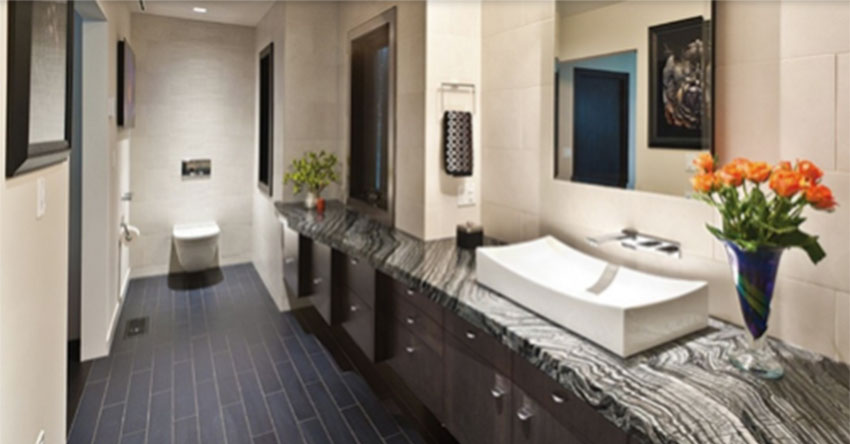
Photo courtesy of Geberit
The use of in-wall toilet systems improves the overall aesthetic of renovated bathrooms and restrooms but also brings notable performance benefits too.

Photo courtesy of Geberit
The final appearance and style of in-wall toilet systems is totally up to the creativity and discretion of the designer of the space—from traditional to contemporary to innovative.
Overcoming Misperceptions
There are some misperceptions about this type of system that need to be overcome in some cases. The first is that they are perceived to be difficult to install, although that only seems to occur when someone has never installed them before. In fact, they are commonly and readily installed in many places using fairly straightforward plumbing practices. Avoiding the need for additional plumbing and incorporating it into existing walls makes the overall construction process much simpler in general. Another misperception is higher overall costs related to installation and material cost. Each renovation project is different, of course, so it behooves designers and cost estimators to do proper comparisons – in some cases, these systems can save money on a project by avoiding other building costs. Finally, there is perception that in-wall systems are only for truly contemporary designs, not for traditional or historic buildings. The exposed part of the toilet is simple and benign and the rest of the appearance of the wall and floor around it is entirely up to the designer. They have, therefore, been used quite successfully in buildings of all types and styles whether traditional, contemporary, modern, or historic.
Altogether the in-wall systems and wall-mounted flush actuators are clearly greater than the sum of their parts in terms of the benefits provided for renovation projects, adaptive re-use, and historic preservation projects. The experience of Nawar Telche, Director of Engineering at the Hotel Julian in Chicago, Illinois is indicative of this. “We needed to utilize maximum space in each room to accommodate the modern conveniences, like Nespresso bars, 55-inch Smart TVs, and mini fridges, demanded by hotel guests. This included making the restrooms comfortable and as large as possible. We also needed a toilet for our guests that flushed quietly, in a way that floor-mounted, exposed-tank toilets may not be able to. With the sanitary technology hidden, the bathroom looks spacious, with a modern high-end finish. The in-wall systems help increase bathroom hygiene by greatly simplifying cleaning. Concealed tanks and wall-hung toilets have fewer edges, joints, and corners and an open floor space when the toilet is kept off the floor so dirt and bacteria can’t hide. The wall-hung toilet system is extremely reliable.”
Sustainability Features
In addition to the other features of in-wall toilet systems, it is important to note the sustainability aspects of the products which include the following.
- Water savings are achieved when installing in-wall carrier systems with a 1.28-gallon tank in-wall carrier.
- Dual flush actuator plates allow less water to be used per flush with a low flush option plus a standard flush option when needed.
- Space savings from in-wall toilet systems can reduce building footprints in new and renovation projects.
- In multi-unit installations, the real potential exists for saving time and resources during construction with less waste and less energy needed for installation.
- Some manufacturers have pursued sustainable manufacturing practices and have a proven track record in that regard. At least one has achieved a multiyear EcoVadis Sustainability Award at Platinum level, the highest for a manufacturer.
Clearly, these products are worthy of consideration from a sustainability standpoint as well.
CONCLUSION
Working to improve or transform an existing building requires blending the existing conditions with current user needs, code requirements, accessibility standards, and methods of construction. Outdoor spaces should be considered as part of any such existing building renovation with many potential benefits for users, occupants, and owners. Upgrading MEP systems, particularly bathrooms and toilets, are also important and can often benefit from the use of in-wall toilet mounting systems. Incorporating some of the concepts and ideas presented in this course can benefit architects and designers and their projects.
Peter J. Arsenault, FAIA, NCARB, LEED AP is a nationally known architect and a prolific author advancing the sustainable reuse of existing buildings. www.pjaarch.com, www.linkedin.com/in/pjaarch



